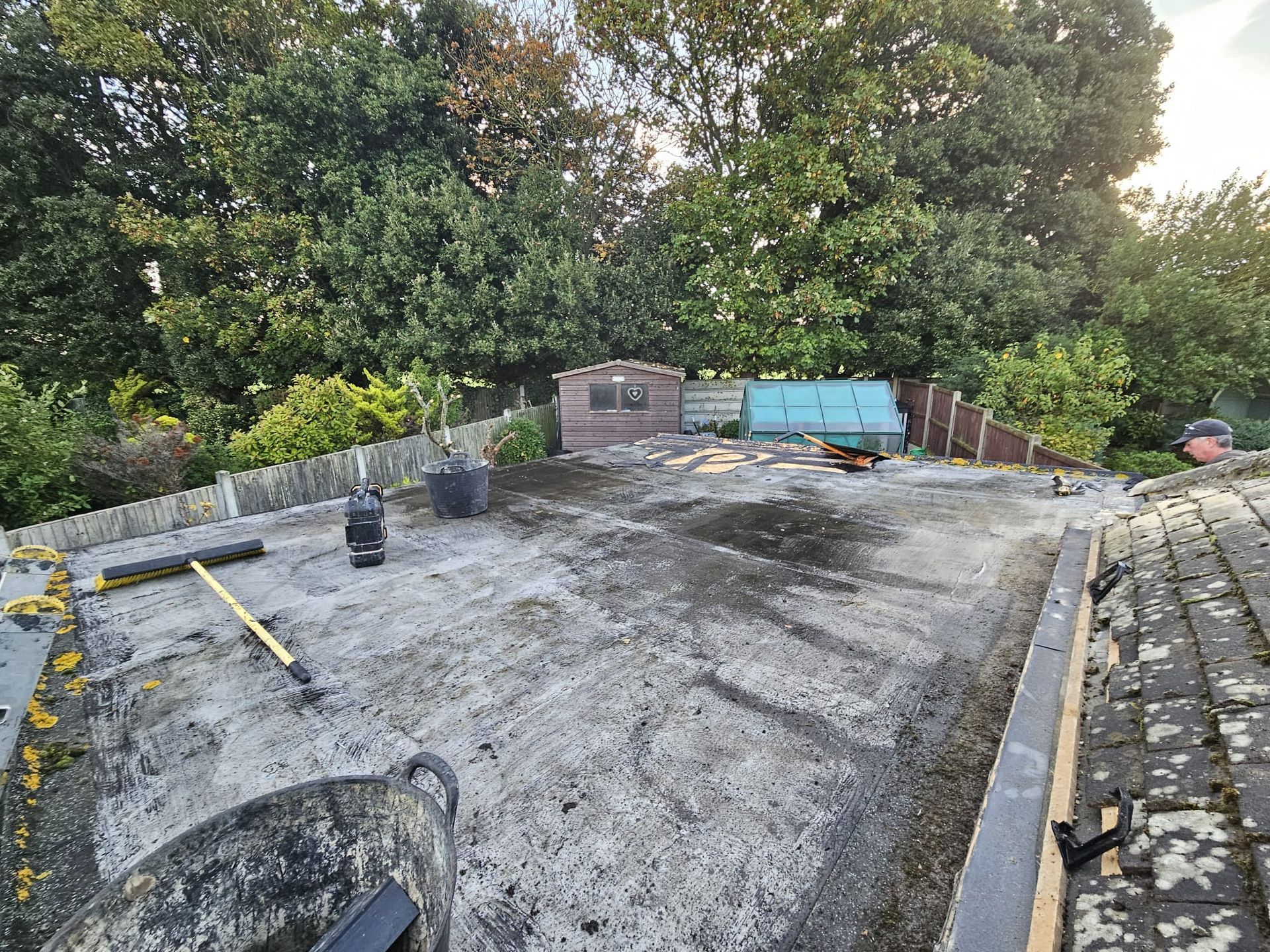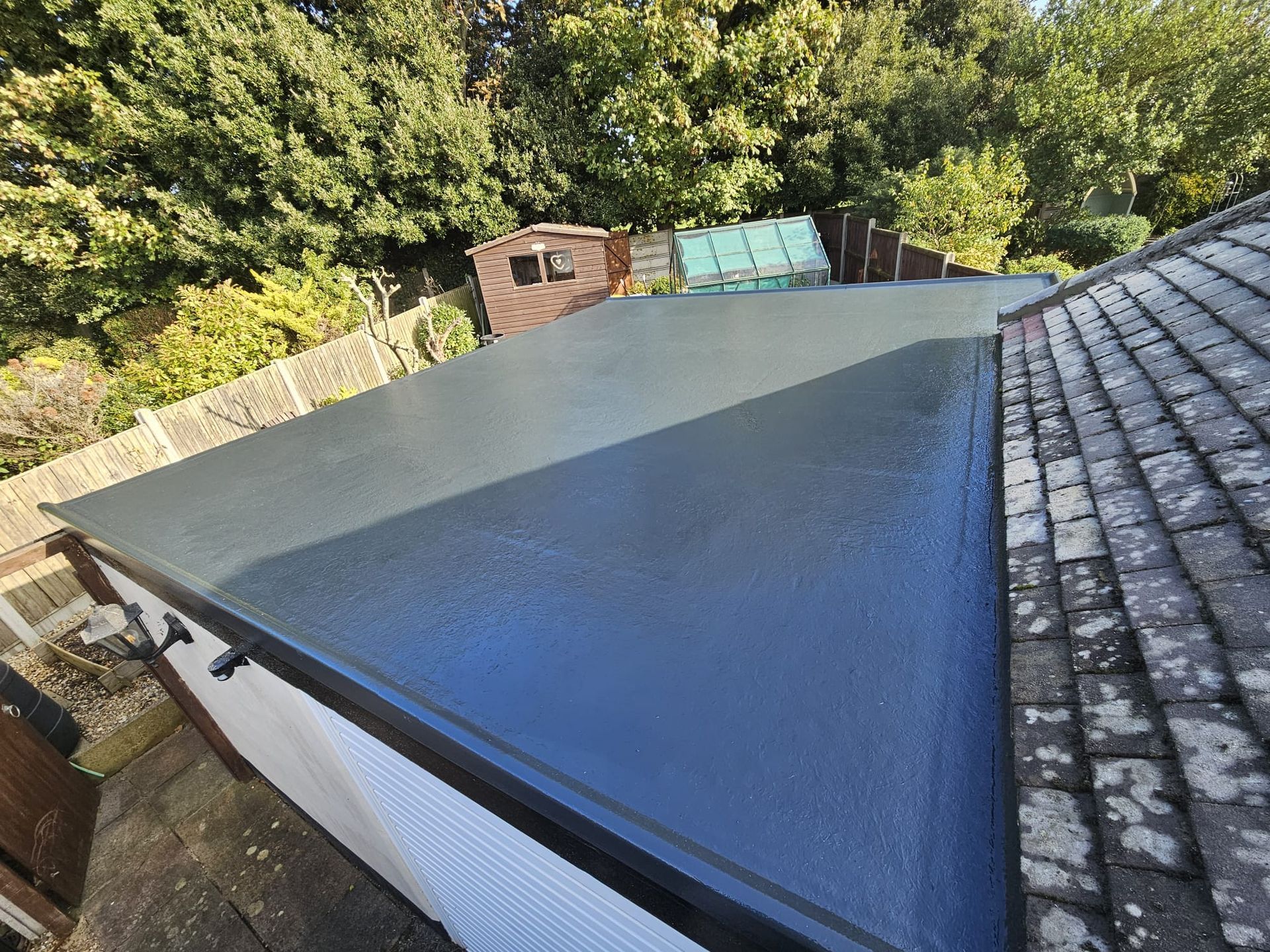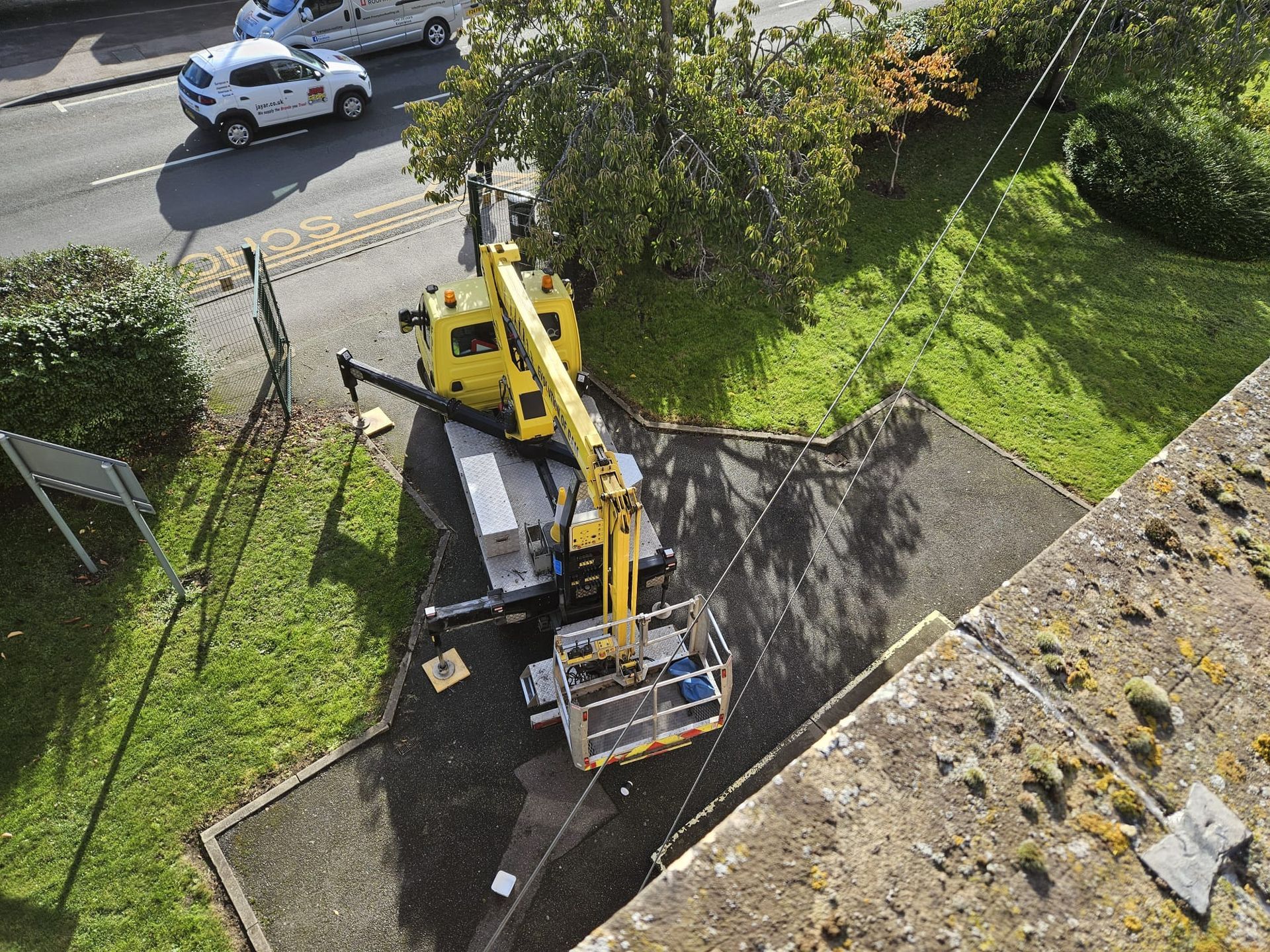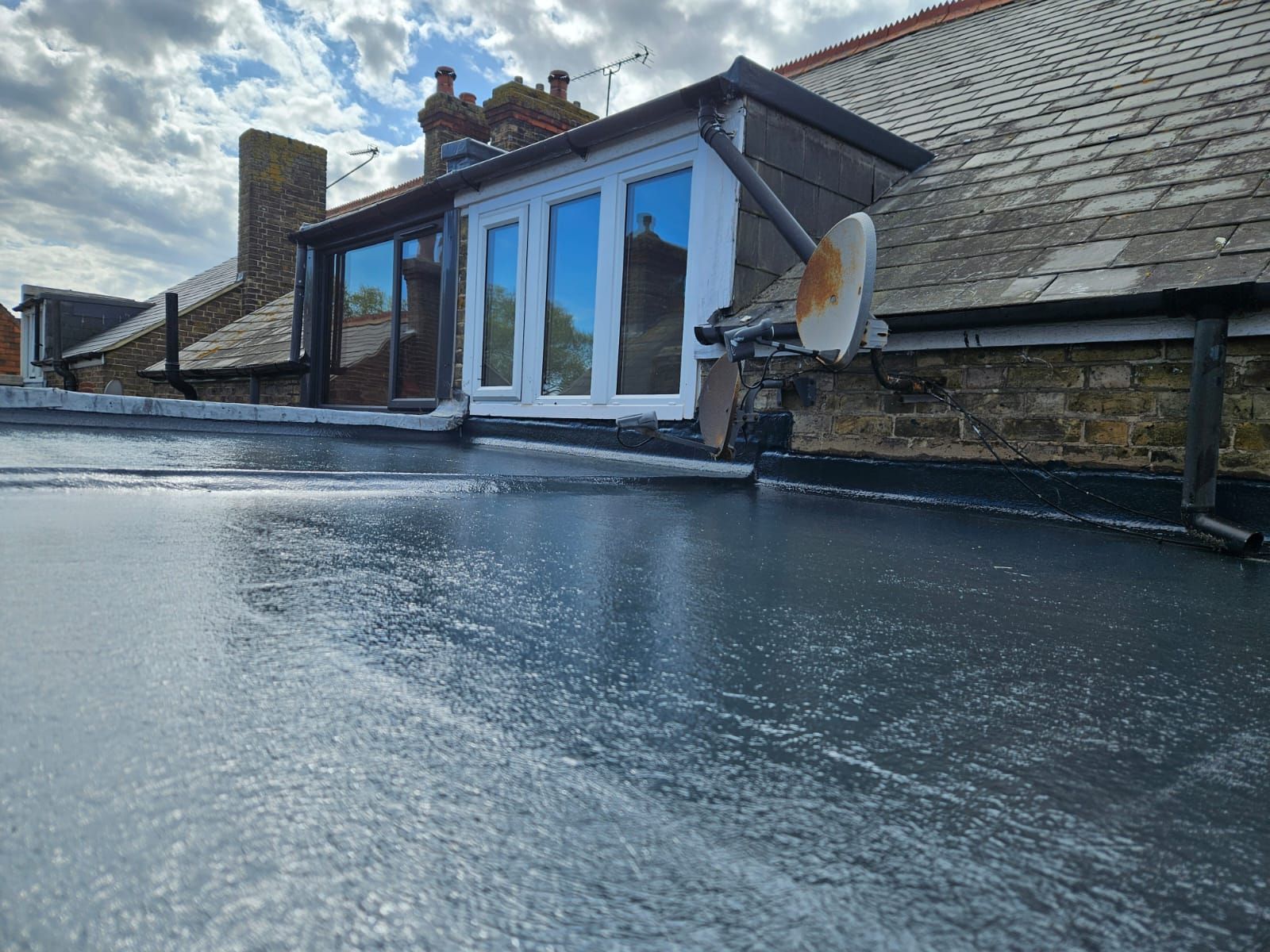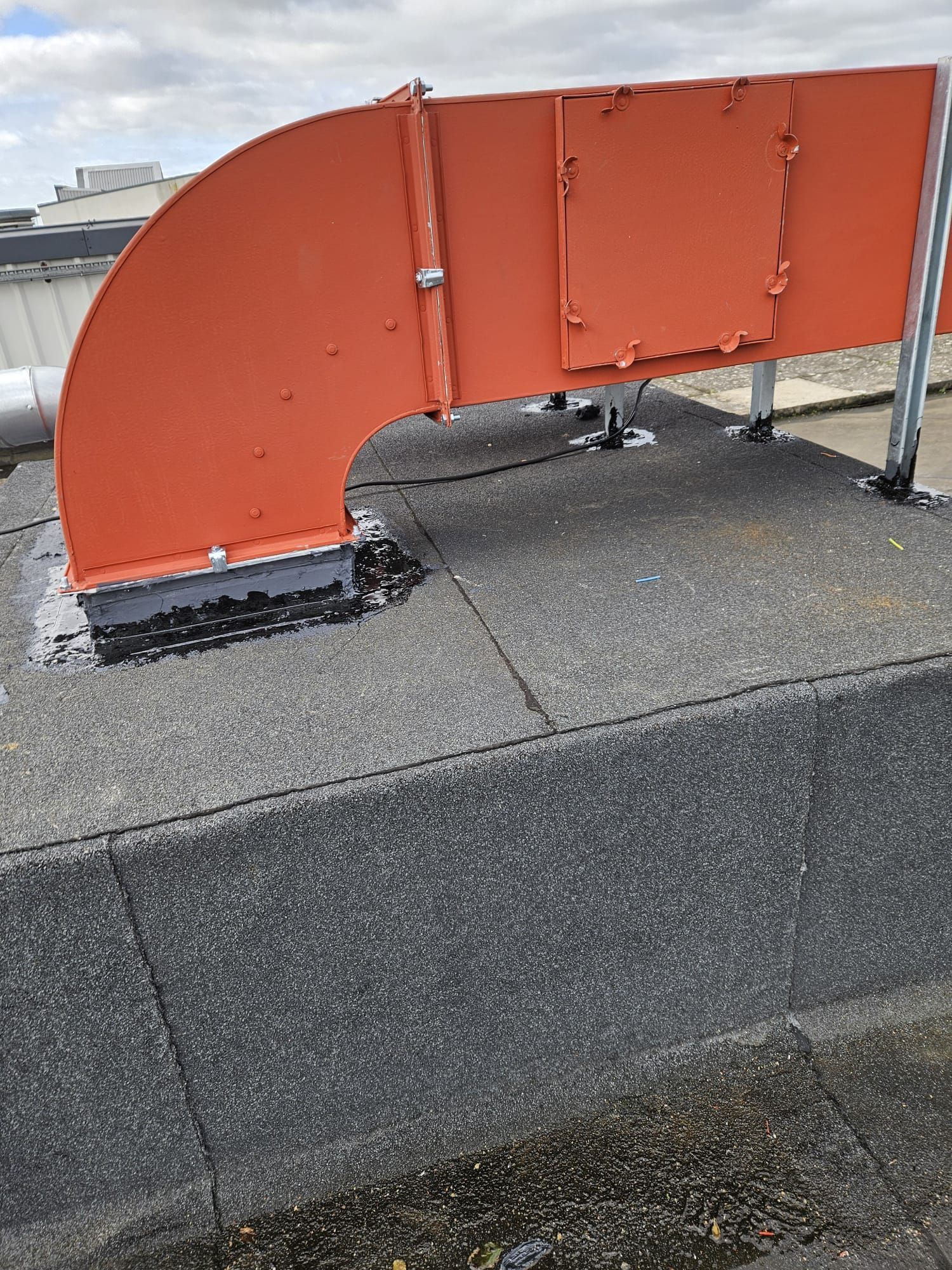How long should a flat foof last?
Understanding flat roof longevity is crucial for homeowners and property managers alike. Knowing how long a flat roof lasts helps in planning maintenance, budgeting for repairs, and anticipating replacements.
Flat roofs are commonly used in both residential and commercial buildings due to their cost-effectiveness and ease of installation. The most popular types include:
- Modified Bitumen
- Single-Ply Membrane (TPO or EPDM)
- Built-Up Roofs (BUR)
Each type has distinct characteristics that make it suitable for different applications.
In this article, we’ll provide comprehensive insights into a flat roof’s lifespan, factors affecting its durability, signs indicating the need for replacement, essential maintenance tips, and when to seek professional help. Let’s get started!
What is the Average Lifespan of Flat Roofs?
Understanding the average lifespan of flat roofs is crucial in determining the best material for your needs. The lifespan can vary significantly depending on the type of material used and the quality of installation.
Typical flat roof lifespans range from 20 to 50 years. Here's a breakdown of specific roofing materials:
- Modified Bitumen: Often used for its durability and ease of installation, modified bitumen roofs typically last around 20 years. Regular maintenance can help extend this lifespan.
- Single-Ply Membrane (TPO or EPDM): Thermoplastic Olefin (TPO) and Ethylene Propylene Diene Monomer (EPDM) are popular choices due to their flexibility and resistance to UV radiation. These materials can last anywhere from 25 to 50 years, with proper care.
- Built-Up Roofs (BUR): Comprised of multiple layers of bitumen and reinforcing fabrics, built-up roofs have a similar lifespan to other materials, generally falling within the 20 to 30-year range.
Choosing the right material for your flat roof involves considering various factors such as climate, budget, and intended use. Each material offers distinct advantages, making it essential to assess which one aligns best with your specific requirements.
Read More:
Flat Roofing Guide: Types, Benefits, & Maintenance Tips
Factors Affecting Flat Roof Longevity
Understanding the factors influencing flat roof life is essential for maximising its durability and performance. Several key elements play a pivotal role in determining how long your flat roof will last:
1. Material Quality
The durability of your flat roof largely depends on the quality of the materials used. High-quality materials, such as premium TPO or EPDM membranes, offer enhanced resistance to wear and tear. These materials can withstand harsh weather conditions and foot traffic better than their lower-grade counterparts, ensuring a longer lifespan.
2. Installation
Roofing installation quality significantly impacts the longevity of your flat roof. Professional installation ensures that all components are correctly fitted and sealed, reducing the risk of leaks and structural issues. Experienced contractors have the expertise to handle complex installations, providing a solid foundation for your roofing system.
3. Maintenance
Regular maintenance is crucial for extending the life of your flat roof. Routine inspections help identify potential problems early, allowing for timely repairs and upkeep. Consistent maintenance practices, such as clearing debris and ensuring proper drainage, prevent minor issues from escalating into costly damages.
4. Environmental Conditions
Local weather conditions and external factors can affect the durability of your flat roof. Extreme temperatures, heavy rainfall, strong winds, and UV exposure can accelerate wear and tear. Foot traffic from maintenance personnel or other activities can also contribute to surface damage over time.
Signs to Know if Your Roof Needs Replacement
Identifying the right time for a flat roof replacement is crucial to avoid extensive damage and costly repairs. Recognising these flat roof replacement signs can help you take timely action:
1. Persistent Leaks and Water Damage
Continuous leaks are a clear indicator of severe roofing issues. Water stains, mould growth, or damp patches on ceilings suggest that the roof's integrity has been compromised.
2. Cracks and Blistering on the Surface
Visible cracks, splits, or blisters in the roofing material signify deterioration. These blemishes can allow water infiltration, leading to more significant problems if not addressed promptly.
3. Other Warning Signs to Watch for
Additional indicators include pooling water, sagging areas, and damaged flashing. Discolouration and peeling paint on interior walls may also hint at underlying roofing issues.
Prevention is better than cure. Or in this case, replacement of your roof. Recognising these symptoms early can prevent minor issues from escalating into major problems. Regular inspections can help spot these signs before they necessitate a full roof replacement.
Importance of Flat Roof Maintenance
Effective flat roof maintenance is crucial for prolonging roof life. Regular inspections should be conducted at least twice a year, ideally in the spring and autumn. During these inspections, look for signs of damage such as cracks, blisters, and pooling water. Identifying and addressing these issues early can prevent more significant problems down the line.
Functional drainage systems are vital for the health of your flat roof. Ensure that gutters and downspouts are clear of debris and functioning correctly. Blocked drainage can lead to standing water, which can cause leaks and structural damage.
Managing standing water is another critical aspect. Flat roofs are prone to water accumulation, which can deteriorate the roofing material over time. Use a squeegee or broom to remove any pooled water after heavy rain.
Key points for flat roof maintenance
- Regular Inspections: Conduct inspections semi-annually. Check for cracks, blisters, and pooling water.
- Drainage Systems: Ensure gutters and downspouts are clear. Remove debris regularly.
- Standing Water Management: Use tools like squeegees to eliminate pooled water promptly.
- Proper maintenance practices not only extend the lifespan of your flat roof but also help avoid costly repairs or replacements in the future.
Maintenance Tips for Flat Roofs
Best Practices for Routine Maintenance
Routine maintenance is the cornerstone of extending the lifespan of your flat roof. Here are some essential flat roof care tips:
- Regular Inspections: Conduct inspections at least twice a year and after severe weather events. Look for signs of wear such as cracks, blisters, or punctures.
- Cleaning Debris: Remove leaves, branches, and other debris that can accumulate and clog drainage systems. This prevents water pooling which can damage the roof surface.
- Check Seals and Flashing: Ensure that all seals around vents, chimneys, and skylights are intact and the flashing is securely in place.
Additional Waterproofing Measures to Consider
Waterproofing is crucial for protecting your flat roof from leaks and water damage. Enhance waterproofing with these strategies:
- Apply Sealant: Use a high-quality sealant on seams and joints to prevent water infiltration.
- Install a Waterproof Membrane: Consider adding an extra layer of waterproof membrane if your roof consistently faces heavy rainfall or snow.
- Re-coating: Periodically re-coat your flat roof with a reflective coating to protect against UV damage and reduce heat absorption.
Seasonal Maintenance Tasks to Ensure Longevity
Adapting your maintenance routine to seasonal changes ensures that your flat roof remains in optimal condition throughout the year:
- Spring and Summer: Clear any winter debris and check for damage caused by ice or snow. Inspect for algae or moss growth due to increased moisture.
- Autumn: Clear fallen leaves before they can block drains. Conduct a thorough inspection to prepare for winter conditions.
- Winter: Regularly remove snow buildup to prevent excessive weight load on the roof. Check for ice dams which can cause significant damage if left unchecked.
Implementing these best practices, additional waterproofing measures, and seasonal tasks will significantly enhance the durability of your flat roof.
When to Seek Professional Help with Your Flat Roof?
Knowing when to hire professional flat roofing services is essential for keeping your roof in good condition and extending its lifespan. Some problems are too complicated for DIY fixes and need the skills of expert roofing contractors.
Identifying Complex Issues
Here are some signs that indicate complex issues with your flat roof:
- Persistent Leaks: If you notice recurring leaks even after multiple repairs, it may be a sign of an underlying issue that only a professional can diagnose and fix.
- Structural Damage: Large cracks, significant blistering, or sagging areas indicate severe problems that necessitate expert intervention.
- Extensive Water Damage: Pooling water and widespread water stains often require advanced techniques to address them effectively.
Benefits of Hiring Experienced Professionals
Hiring experienced professionals for your flat roof repairs comes with several advantages:
- Expert Diagnostics: Experienced contractors can quickly identify the root cause of issues, saving you time and money.
- Quality Repairs: Professionals use high-quality materials and proven methods to ensure durable repairs.
- Warranty Protection: Many professional services offer warranties on their work, providing peace of mind for future repairs.
Engaging specialised roofing contractors not only resolves current issues but also enhances the overall lifespan of your flat roof.
A recent project
For this project, affectionately dubbed “The Big Rip-Up,” we tackled a full roof transformation. First, we removed the existing felt covering, disposing of it responsibly to clear the way for a fresh start. Next, we installed durable 8x2 OSB boards to create a solid base. Preformed trims were then fixed to the edges, ensuring a neat and secure perimeter.
The heart of the job was applying a chopped strand glass fiber mat with Lloyd’s pre-accelerated polyester resin, bonding it seamlessly to the decking. Once the fibreglass cured, we sanded the surface down to perfection and finished it with Lloyd’s approved pre-accelerated polyester topcoat. The result? A sleek, durable roof and one very satisfied customer. Another successful job, delivered with precision and care!
Need Flat Roof Repair? Go for Frampton UK
When evaluating how long a flat roof lasts, the importance of quality materials and consistent maintenance cannot be overstated. High-calibre materials ensure durability, while regular upkeep prolongs the lifespan, protecting your investment.
Regular inspections by our experts at Frampton Roofing help identify minor issues before they become costly problems. Expert maintenance ensures that drainage systems function correctly, debris is cleared promptly, and additional waterproofing measures are applied when necessary.
Check out our latest roofing projects
For top-notch services and expert advice, trust the experts at Frampton Roofing UK. Contact us today for a FREE estimate from our roofing experts.

